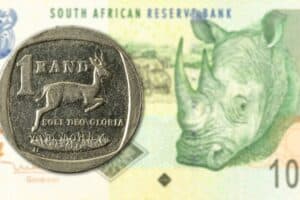Ahead of ratings review by S&P Global Ratings and Moody’s Investors Service.

The rand broke through R14/$ on Friday midday ahead of two credit ratings from S&P Global Ratings and Moody’s Investors Services that could descend SA into a deeper junk-credit zone.
The local currency has had a choppy intra-day trading session, breaking through the R14/$ resistance level and weakening by nearly 1%.
The rand was R14.02 to the dollar at 12:13 from the R13.90/$ at 8:05, inferring that investors are anticipating a bruising downgrade to junk by S&P or Moody’s in less than 24 hours
“The market is already anticipating some sort of downgrade,” said Wayne McCurrie, a senior portfolio manager at Ashburton Investments. “A downgrade has already been priced into some extent if you look at the currency and bond market.”
Kevin Lings, the chief economist at Stanlib, supported McCurrie’s views saying the local currency had not fully priced in the potential downgrades as it recently broke through the R14.60 level.
“At this level, we had thought that the rand had been moving to price in anticipation of a rating downgrade,” said Lings.
SA faces the risk of being downgraded on its local currency debt by Moody’s and S&P, which have both placed SA’s local currency debt rating on the lowest investment grade rating of Baa3/BBB-minus.
Both rating agencies are concerned about SA’s anemic economic growth, resistance to embrace fiscal reform to contain the ballooning budget deficit and government debt, and the governance of state-owned enterprises.
The consensus view from five fund managers Moneyweb spoke to is that S&P is likely to downgrade the local currency debt to sub-investment grade (or junk) but Moody’s is likely to leave its rating unchanged.
Moody’s, which has been less stringent than Fitch Ratings and S&P, is expected to delay its downgrade to see how the ANC’s elective conference in December will pan out. This event is a key to SA’s economic and public policy path.
Impact to bond market
A downgrade to junk of SA’s local currency credit by S&P and Moody’s could see the country lose its spot in Citigroup’s World Government Bond Index and the Barclays Bloomberg index.
Market watchers have estimated that the exclusion from the indexes would spark a potential sell-off in SA’s bond market by foreigners of between $2 billion and more $10 billion.
“What has not been priced into the bond or currency market is a downgrade by both S&P and Moody’s that results in SA bonds being rebalanced out of the global indexes,” said Stanlib’s Lings.
South African government bonds became the first African government bonds to be included in the index in October 2012. If excluded from the index, many foreign asset managers with investment grade mandates would dump SA bonds.
This is not necessarily a bad thing, said George Glynos, the chief economist at ETM Analytics. The selloff might spark buying opportunities for asset managers in the local pension and insurance industry, who have been underweight on SA bonds.
At a 9% yield, the SA ten-year bond yield is considered to be attractive compared with a 6% to 7% emerging market peers Russia, India, and Indonesia offer to investors. And SA’s bond market is exceptionally liquid and sophisticated, allowing investors to get out quickly.
“Local fund managers might jump at the opportunity to purchase some of these bonds given that they will get inflation plus yields. They might use the outflow of foreigners to buy into local bonds,” said Glynos.
Foreigner’s asset managers that invest in emerging market bonds might purchase SA bonds. “There is a tremendous amount of trade that takes place between foreigners outside of SA. You could get a foreign investment grade manager selling South African bonds to a sub-investment grade manager overseas,” said Glynos.
An initial reaction to the bond sell-off by foreigners could put the rand at more risk, with Lings saying that the rand could weaken to R15/$ and SA’s ten-year bond yield would spike to 10%.
If history is anything to go by, the rand has remained remarkably resilient even when SA’s prospects remain precarious. Ashburton Investments’ McCurrie said if the outcome of the elective conference is favourable, the rand might retreat to R12/$. “If we get a market-friendly outcome in December, the rating agency decisions might not make a difference.”
Brought to you by Moneyweb
For more news your way, follow The Citizen on Facebook and Twitter.






